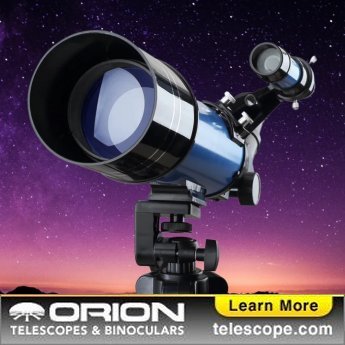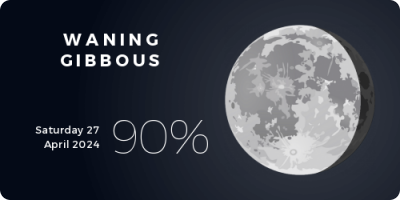Eridanus, the River (Eri)
(ih-RID-un-us)
The Southern constellation of Eridanus, the River, is best viewed in Winter during the month of December.
Eridanus is the 6th largest constellation. It's brightest star is Achernar at magnitude 0.46. The boundary of the Eridanus constellation contains 26 stars that host known exoplanets.
- Pronunciation:
- ih-RID-un-us
- Meaning:
- River
- Genitive:
- Eridani
- Abbreviation:
- Eri
- Constellation Family:
- Heavenly Waters
- Hemisphere:
- Southern
- Quadrant:
- SQ1
- Visibility:
- 32° N - 90° S
- Best viewing month*:
- December
- Area:
- 1138 sq. degrees
- Size:
- 6th largest
- Right Ascension (avg):
- 3h 53m
- Declination (avg):
- -19°
- Brightest star:
- Achernar (0.46)
- Stars with planets:
- 26
- Messier objects:
- |
- Caldwell objects:
- |
Brightest Stars in Eridanus
The 10 brightest stars in the constellation Eridanus by magnitude.
- Star
- Magnitude
- Spectral class
- Alpha Eridani (α Eri)
- 0.45
- B3Vp
- Beta Eridani (β Eri)
- 2.78
- A3IIIvar
- Theta Eridani (θ1 Eri)
- 2.88
- A4III+
- Gamma Eridani (γ Eri)
- 2.97
- M1IIIb Ca-1
- Delta Eridani (δ Eri)
- 3.52
- K0IV
- Upsilon Eridani (υ4 Eri)
- 3.55
- B9V
- Phi Eridani (φ Eri)
- 3.56
- B8IV-V
- Chi Eridani (χ Eri)
- 3.69
- G5IV
- Tau Eridani (τ4 Eri)
- 3.7
- M3/M4III
- Epsilon Eridani (ε Eri)
- 3.72
- K2V
- 40 Eridani A (40 Eri)
- 4.43
- K0.5 V
Double Stars in Eridanus
These are the brightest and easiest-to-find double, triple, and quadruple star systems in the constellation Eridanus . Also see all star clusters.
- Star system
- Magnitudes
- Type
- 32 Eridani
- 4.8, 5.9
- double
- 55 Eridani
- 6.7, 6.8
- double
Nebulae in Eridanus
Notable and easy-to-find nebulae in the constellation Eridanus . Also see all nebulae.
Galaxies in Eridanus
The most notable galaxies in the constellation Eridanus. Also see all galaxies.
Milky Way Satellites in Eridanus
Dwarf satellite galaxies that orbit the Milky Way Galaxy located in the constellation Eridanus. Also see all Milky Way satellite galaxies.
- Galaxy name
- Alt name
- Magnitude
- Eridanus II
- Eridanus III
The Celestial River
Eridanus, the River, is a prominent constellation in the southern hemisphere's celestial sphere. Named after the Greek term for the Po River, Eridanus represents a winding river in Greek mythology, and is one of the largest constellations, spanning a significant portion of the sky. It's renowned for its array of celestial objects and its role in various mythologies and historical contexts.
Historical Overview
Eridanus is one of the 48 constellations identified by the ancient Greek astronomer Ptolemy in the 2nd century. Its imagery is tied to several ancient myths, most notably that of Phaethon, the son of the sun god Helios, who couldn't control his father's sun chariot and was struck down by Zeus, falling into the river Eridanus. This ancient constellation continues to be one of the 88 modern constellations recognized by the International Astronomical Union (IAU).
Location and Main Features
Eridanus is located in the first quadrant of the Southern hemisphere (SQ1) and can be seen at latitudes between +32? and -90?. It's surrounded by numerous constellations including Caelum, Cetus, Fornax, Horologium, Hydrus, Lepus, Orion, Phoenix, Taurus, and Tucana.
The constellation of Eridanus covers an expansive area of 1138 square degrees, making it the sixth largest constellation in the sky. Its celestial river flows from the feet of Orion and winds across the sky, branching out in different directions.
Major Stars
Eridanus contains several notable stars, the most famous of which is Achernar, or Alpha Eridani. Achernar is the ninth brightest star in the night sky and is notable for its extreme oblateness; it is one of the flattest stars observed because of its rapid rotation.
Beta Eridani, known as Cursa, is the second brightest star in Eridanus. Other notable stars include Epsilon Eridani, which is one of the closest stars to Earth known to have a planetary system, and 40 Eridani, a trinary star system which, in the Star Trek universe, is presented as the home of the Vulcans.
Deep Sky Objects
While Eridanus doesn't host any Messier objects, it does contain several other deep-sky attractions. The constellation is home to the Eridanus Supervoid, a massive empty space in the universe discovered through studies of the cosmic microwave background radiation. This void is one of the largest structures known in the universe and is still a subject of ongoing study and mystery.
Eridanus also contains a number of galaxies, including NGC 1300, a barred spiral galaxy that is one of the best examples of this type of galaxy seen face-on. NGC 1232, a beautiful spiral galaxy, is also found in Eridanus.
Observation
Eridanus is best observed during the months of December and January. Given its southerly position, the constellation is more easily visible from the southern hemisphere, although observers in the northern hemisphere can also see its northernmost part. Because it contains relatively bright stars and covers a large area of the sky, Eridanus is a captivating target for stargazers.
Eridanus in Modern Astronomy
In contemporary astronomy, Eridanus holds particular interest due to the presence of Epsilon Eridani's planetary system and the Eridanus Supervoid. Observing these objects provides astronomers with valuable information on topics like exoplanet atmospheres and large-scale cosmic structures.
* Constellation shown for northen hemisphere skies. For the southern hemisphere, constellations appear rotated 180 degrees (upside-down and left-right reversed) from what is shown. Remember that seasons are reversed too - summer in northern latitudes is winter in southern latitudes.
** Circumpolar constellations are visible year-round in the hemisphere listed (and not at all in the opposite hemisphere).





